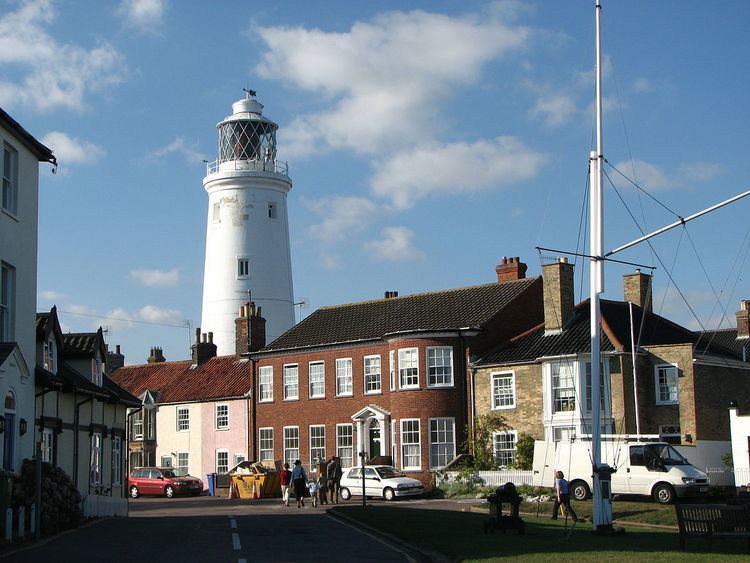Location Southwold, Suffolk Automated 1938 Height 31 m Construction started 1887 | Year first constructed 1890 Focal height 37 metres (121 ft) Opened 1890 Phone +44 1255 245156 | |
 | ||
Tower shape cylindrical tower with balcony and lantern Markings / pattern white tower and lantern Address Stradbroke Road, Southwold IP18 6LU, United Kingdom Similar Cromer Lighthouse, Hilbre Island Lighthouse, Lynmouth Foreland Lighthouse, Berry Head Lighthouse, St Bees Lighthouse | ||
Southwold lighthouse tour
Southwold lighthouse is a lighthouse operated by Trinity House in the centre of Southwold in Suffolk, England. It stands on the North Sea coast, acting as a warning light for shipping passing along the east coast and as a guide for vessels navigating to Southwold harbour.
Contents
- Southwold lighthouse tour
- Southwold lighthouse suffolk uk los ifly 4 flight
- HistoryEdit
- Current displayEdit
- BuildingsEdit
- References
The lighthouse, which is a prominent local landmark, was commissioned in 1890, and was automated and electrified in 1938. It survived a fire in its original oil-fired lamp just six days after commissioning and today operates a 150-watt lamp. The main navigation lamp has a range of 24 nautical miles (44 km; 28 mi).
Southwold lighthouse suffolk uk los ifly 4 flight
HistoryEdit
Construction of the lighthouse began in 1887, led by Sir James Douglass, Engineer in Chief of Trinity House. A light was lit on a temporary structure in February 1889 and the lighthouse itself began operating on 3 September 1890. It replaced three lighthouses that had been condemned as a result of serious coastal erosion. The lantern itself was previously used at the Happisburgh low lighthouse but became available when the latter light was demolished.
The original light was powered by a six-wick Argand oil burner. Just six days after the light was commissioned there was a fire in the lighthouse with the burner being destroyed. The inexperience of the new lighthouse keepers was blamed for the fire. The burner was replaced with an oil-fired light in 1906 and a petroleum burner in 1923. The light was electrified and automated in 1938. It was converted to battery operation, with the batteries charged using mains electricity, in 2001.
The lighthouse, along with Lowestoft Lighthouse to the north, was threatened with closure by Trinity House in 2005, with shipping companies increasingly using satellite navigation systems rather than relying on lighthouses. Both lighthouses were reprieved in 2009 following a review by Trinity House that found that satellite navigation systems were not yet sufficiently reliable.
Current displayEdit
A BLV Topspot 90 Volt Metal Halide 150-watt revolving lamp with a range of 24 nautical miles (44 km; 28 mi) provides the main light. This replaced three 90-watt Osram Halostar lights with a range of 17 nautical miles (31 km; 20 mi) in December 2012 in preparation for the closure of Orfordness Lighthouse in June 2013.
The current light characteristic is one white flash every 10 seconds (Fl(1).W.10s) visible between 204°–032.5°. The white light is used for general navigation. Red sectors, previously used to mark shoals to the north and offshore sandbanks at Sizewell to the south, were removed as part of the 2012 refit. The old lens has been retained for use as an emergency backup.
BuildingsEdit
The lighthouse is 31 metres (102 ft) tall, standing 37 metres (121 ft) above sea level. It is built of brick and painted white, and has 113 steps around a spiral staircase. Two keeper's cottages were built next to the lighthouse rather than living quarters being made in the lighthouse itself. The lighthouse is a Grade II listed building. Guided visits are run by the Southwold Millennium Foundation.
The lighthouse was the site of charity abseil events in 2009, 2011 and 2013. The events raised money for the Southwold lifeboat operated by the RNLI from Southwold harbour.
